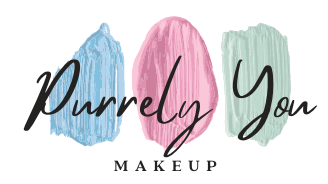Dive into the world of underarm ingrown hair. Discover its causes, symptoms, and effective solutions. Bid farewell to skin irritations and discomfort.
Ingrown hairs under the arms can be a pesky issue. In this comprehensive guide, we explore the causes and provide practical solutions to help you maintain smooth, irritation-free underarms.

Introduction
Ingrown hair is a common concern, and when it occurs under the arms, it can be particularly bothersome. This article delves into the world of underarm ingrown hair, shedding light on its causes, symptoms, and offering effective solutions for a more comfortable grooming routine.
Understanding Underarm Ingrown Hair
What Are Ingrown Hairs?
Ingrown hairs occur when a hair strand curls back or grows sideways into the skin instead of rising out of the hair follicle. This can lead to redness, bumps, and discomfort.
Causes of Underarm Ingrown Hair
- Shaving: Improper shaving techniques, such as shaving against the grain, can cause hair to grow inward.
- Tight Clothing: Wearing tight clothing can contribute to friction, pushing hair back into the skin.
- Clogged Pores: Buildup of dead skin cells and oils can block hair follicles, leading to ingrown hairs.
- Coarse or Curly Hair: Curly hair is more prone to curling back into the skin, causing ingrown hairs.
Symptoms
Common symptoms of underarm ingrown hair include redness, itching, and the presence of small, raised bumps.
Preventing Underarm Ingrown Hair
Proper Shaving Techniques
- Use Sharp Razors: Dull razors can cause hair to break and lead to ingrown hairs.
- Shave in the Direction of Hair Growth: This minimizes the chance of hair growing inward.
- Exfoliate Regularly: Gently exfoliate underarms to prevent the buildup of dead skin cells.
Clothing Choices
- Opt for Breathable Fabrics: Choose natural, breathable fabrics to reduce friction.
- Looser-Fitting Clothing: Wear looser clothing, especially after shaving, to minimize irritation.
Treating Underarm Ingrown Hair
Warm Compress
Apply a warm, damp cloth to the affected area for a few minutes to soften the skin and help the ingrown hair surface.
Sterile Tweezers
If the ingrown hair is visible, use sterile tweezers to gently lift the hair out of the skin.
Topical Treatments
Apply over-the-counter creams containing salicylic acid or glycolic acid to exfoliate and prevent ingrown hairs.
FAQs (Frequently Asked Questions) For Underarm Ingrown Hair :
Q: Can ingrown hairs become infected?
Yes, if left untreated, ingrown hairs can become infected and may require medical attention.
Q: Is waxing a better option than shaving to prevent ingrown hairs?
Waxing can reduce the likelihood of ingrown hairs as it removes hair from the root, but it’s not entirely foolproof.
Q: How long does it take for an ingrown hair to heal?
The healing time varies but can take several days to a few weeks, depending on the severity.
Q: Are there any home remedies for treating ingrown hairs?
Some people find relief with home remedies like applying aloe vera or tea tree oil to the affected area.
Q: When should I see a dermatologist for ingrown hairs?
If ingrown hairs are recurrent, painful, or become infected, it’s advisable to consult a dermatologist.
Conclusion
Dealing with underarm ingrown hair can be a discomforting experience, but armed with the right knowledge, prevention, and treatment methods, you can bid farewell to skin irritations and enjoy smooth, beautiful underarms. Say goodbye to ingrown hair woes and embrace a more comfortable grooming routine.


